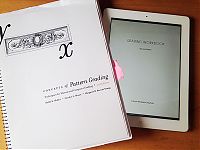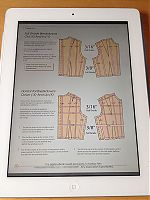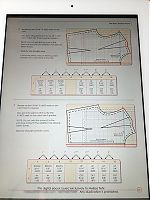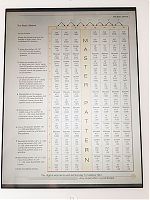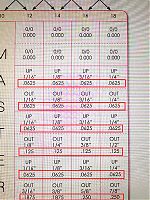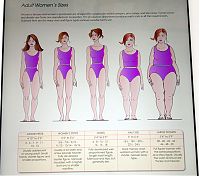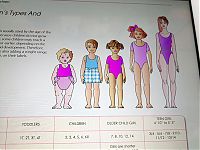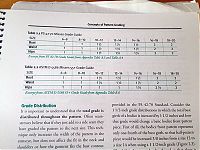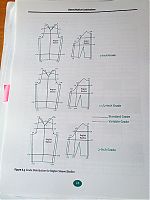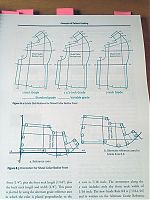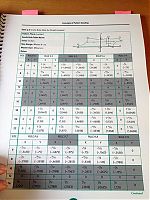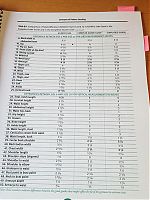I’ve got not one, but two books to talk about today, both on the subject of pattern grading, which, to be honest, has hardly any books published on the topic and seems to be a bit of an industry secret or something.
If you’re not familiar with what pattern grading is – it’s the process of taking one pattern and adding or subtracting amounts at various points to make it another size, or multiple sizes. This isn’t just a simple equation of “well, size Y is twice as big as size Q” because humans’ shapes don’t grow at the same rate (ie: the difference between a size 0 and a size 18’s shoulders aren’t likely to be as great as the difference in hip sizes). In general, the measurements around the body change much more than the vertical measurements, so you need to follow some rules to know how far to move different points and in which directions.
Now, there’s an old-fashioned way of doing this with paper patters, scissors, tape, a special “grade ruler”, and several hours of your time, and this was covered pretty extensively in the September 2014 Threads Magazine (#174). In my personal opinion, this is fine if you only want to change one pattern to one other size, for instance if you have a vintage pattern but want it in your own size. Doing more than one size this way is a great way to end up throwing everything into the bin after several hours of swearing.
In my opinion, the far less stressful way to do pattern grading is digitally. You select a point, tell your software (like Adobe Illustrator) to move it xx cm vertically and yy cm horizontally, and you do that to all the points around the pattern. No taping, no cutting, and no weird ruler. Plus it’s way more accurate. So with this in mind, my reviews of both books are skewed heavily towards how they deal with digital drafting.
Let’s look at “Grading Workbook” by Connie Crawford first. It’s been out as a print book for a while, but I bought an early edition of the pdf ebook last year, which has been extensively cleaned up and digitised. I checked about a month ago, and there haven’t been any revisions so the copy I’m reviewing here is indeed current.
The book is targeted at someone who has some knowledge of pattern drafting, but is a beginner at pattern grading – most home sewists would be able to follow along with the introductory chapters which explain the methods and theory, and how to select different grades.
For each of the grade tables (ie: bodice, skirt, sleeve, stretch, child, etc), there are a few pages which show which point is being selected and which direction to move it, shown in a series of diagrams, like these two:
Then at the end, there’s a table which shows exactly how far vertically and horizontally you’re to move each of those points shown in the preceding pages.
This is really nice, as most grading books don’t do the legwork for you and expect you to fill in your own tables based on however you want the grade to be (even or uneven, and how much in between each size). Or rather, it would be nice if it was a bit more user-friendly. I found myself, each time I wanted to use the table, having to flip back several pages to see which point they were talking about, then flipping back to the chart to see the amount. For every point on every size. So I eventually just took screenshots of the diagrams and chart and made myself my own cheatsheet in Photoshop just so I could have everything on one page. This is time-consuming, and made me annoyed since this is something that could’ve easily been done on their end. But no matter.
The real problem, though, is that there are a freaking million typos/errors in every single chart. Really.
Those numbers below are supposed to be the decimal equivalent of the fraction, which is important for entering it into your digital system. But if you’re not paying attention, you’ll just type in what’s there and screw up your entire grade and waste hours of work. THANKS!
This is the major reason why I can’t really recommend this book.
But moving on… I rather liked this explanation of the different types of women’s figures, even if it is light on specifics. I’ve never seen a “Half size” explained anywhere before that I can recall…
But the drawings of the various childrens figures really just creep me out.
But let’s move on to the second grading book, “Concepts of Pattern Grading” by Carolyn L. Moore et al. I bought this one after tearing my hair out one too many times using the Crawford book, and it’s significantly different.
For starters, this book is definitely more technical, aimed at professionals or fashion students. It’s highly geeky, and you need to be in the right frame of mind to read and absorb it. But it contains interesting details such as this table, showing the grading differences between sizes if you’re targeting a youthful figure versus a 55+ figure:
This book also contains rules and tables for all the basic pattern types: bodice, skirt, sleeve, trousers, collars, etc, but the major difference here is that all the tables are blank and you have to fill them out for yourself. The book comes with a cd containing all the blank tables and worksheets as pdfs, so you can print out your own for each project. I personally would’ve preferred if this info was all in metric rather than inches, because it’s a ton easier to add and subtract mm than it is fractions (I actually downloaded a fraction calculator app for my phone), but the concepts are really well explained and it doesn’t take that long to fill out the table yourself.
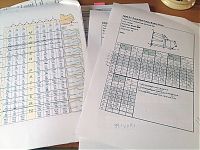
Two of my actual worksheets – the Crawford is on the left and Concepts on the right
Beyond the basic grading rules, though (which Crawford’s book also covers), this book gets into the really weird stuff, too, like asymmetric designs and draped designs that continue onto two planes (think Pattern Magic). But useful-weird stuff, too, like raglan sleeves.
Shawl collars are used to show how to draft when flat shapes wrap around into 3D, but frankly, this is starting to get a bit beyond me.
And then we get into the stretch stuff, which should be second nature to me but waaaaaaahhhhh does this book make it overly complicated. I suppose they’re being thorough.
The back of the book is filled with a huge amount of table of measurements of various figure types, which is really helpful if you’ve, say, measured someone in a bunch of places but forgot one little thing…
In my opinion, I vastly prefer the “Concepts of Pattern Grading” book. Yes, you have to do a lot of the work yourself before you can start grading, but there’s a lot more information there, it’s very neatly explained, and there’s a lot of room there for your skills to grow. I would recommend the “Grading Workbook” for beginners if the hundreds of typos (or errors?) are fixed and they improve the usability of the charts. The Workbook is significantly cheaper and has the potential to be more beginner-friendly, but at this time, I’d choose Concepts… every single time.
I’m currently on a much-needed holiday through Central Europe, ending with running the Berlin marathon. I’m trying not to work while I’m away, so I’ll respond to anything non-urgent once I’m back. Thanks!

